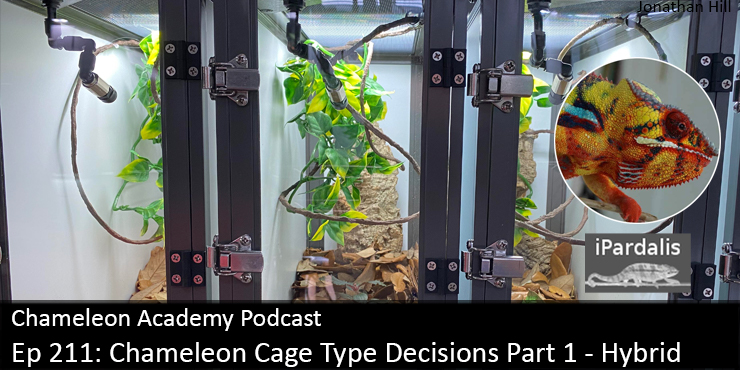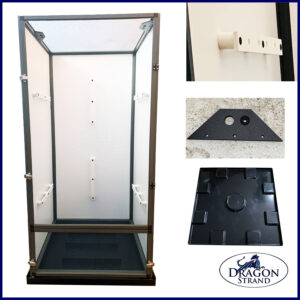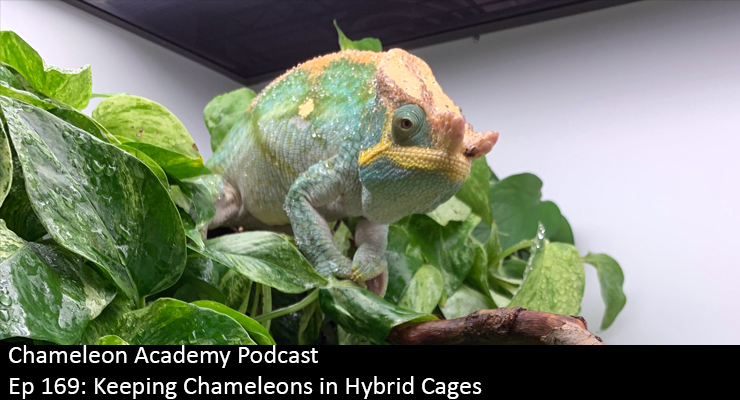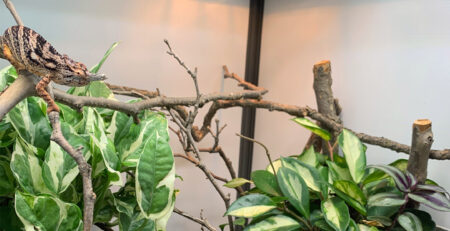Ep 211: Chameleon Caging Decisions pt 1 – Hybrid
Listen Here!
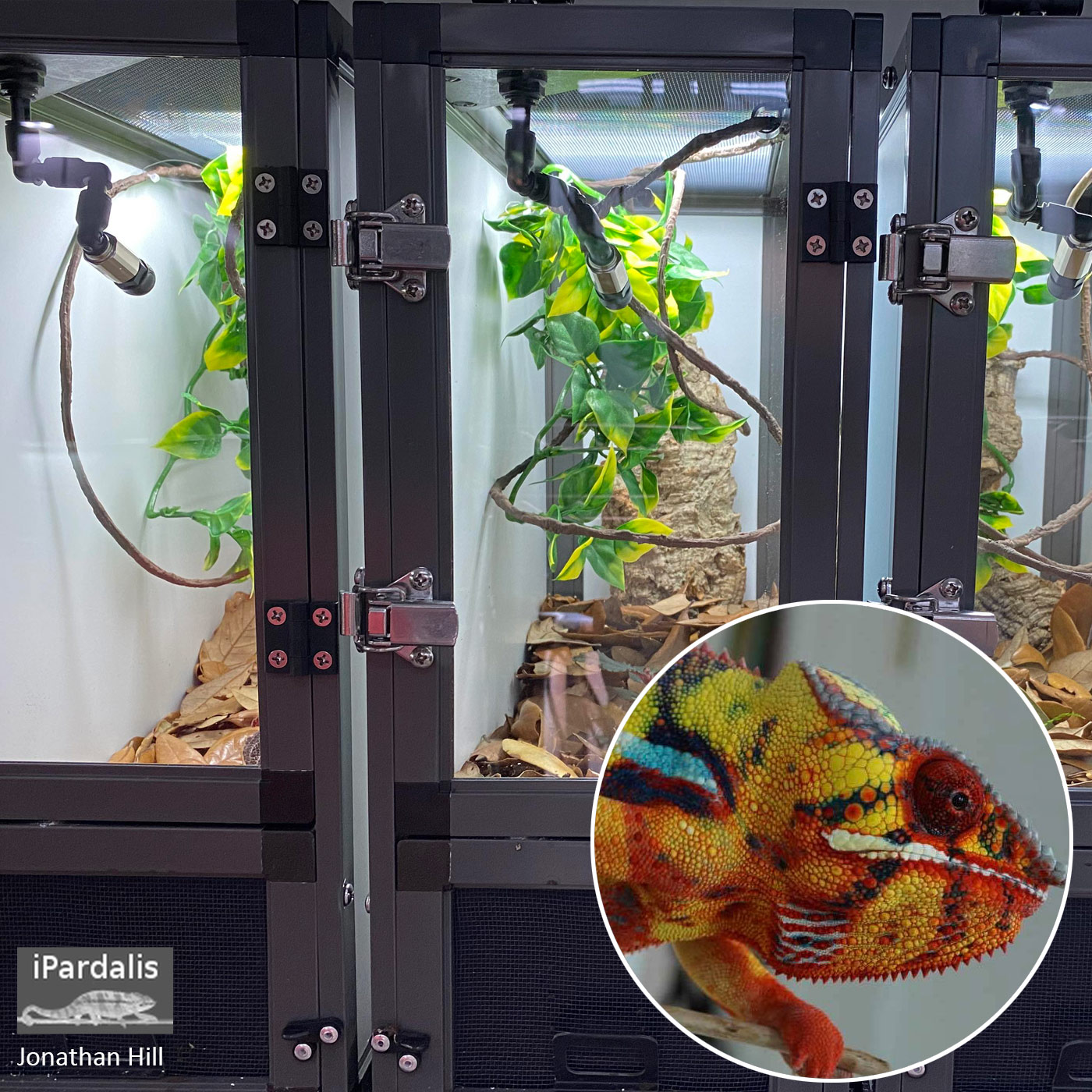

Bill Strand
Chameleon Caging Decisions pt1 - Hybrid
Deciding on a cage type for your chameleon can be confusing. You hear that chameleons have to be in screen cages but you have all these advanced users using hybrid or even glass cages. Today I am talking with Jonathan Hill of iPardalis about why he chose to use hybrid caging for his breeding program.
Links discussed
Jonathan Hill runs iPardalis. The special value he offers is panther chameleons individually raised. Click the link to see his availability!
One of the early articles discussing the issues with focusing on screen cages only.
Although the cages Jonathan referenced in this episode where the Dragon Strand Nursery Cages, the most common hybrid cage used for single adult chameleons is the Tall Hybrid Cage System.
This links to a podcast episode that discusses keeping chameleons in hybrid cages.
Transcript (more or less)
If you have been around chameleon keeping for any length of time you will hear that chameleons need to be housed in screen cages or they will die. Though if you have listened to this podcast for any length of time you will probably run into me saying this isn’t true. So, what do you do when so many of your social media people can’t see beyond screen cages and say anything else is for experts? Well, I have presented frequently that the cage type you select should depend on the ambient conditions. The closer your ambient conditions are to the conditions on the care sheet for your species the more screen panels you use. The further away they are the more solid sides you use. So, if your conditions will sustain chameleon life then use a screen cage. I use screen cages extensively for my outdoor keeping. But indoors I need some modification of the conditions. There is no way for me to effectively get the humidity close to 100% at night. I can put a fogger on the cage and give my chameleon a small cone of fog to find a way to sleep in, but that situation begs for a better solution. A hybrid cage is a cage that incorporates solid panels to block airflow and screen panels to provide airflow. By strategically positioning these you can provide enough ventilation to provide an effective exchange of air and drying out of the surfaces during the day while still maintaining enough control over ventilation to keep your fog in at night. To go further in the hybrid direction you can utilize appropriately sized glass enclosures.
I have done may episodes where I talk about cage selection theory. But the use of hybrid cages and especially glass caging is still considered for experts by most of the community. While there are more elements to watch out for, it is because you are giving a more complete husbandry to your chameleon. You cannot say that a full screen cage is just as good if you are disregarding the humidity and hydration requirements of your chameleon.
I am going to take a different approach this time. This is a two part series in which I interview two breeders that made choices to use specific caging. This episode I will be talking with Jonathan Hill of iPardalis who started off using screen cages, but transitioned to the hybrid caging style. We will learn about how he started and the decision process he went through to switch his entire operation to hybrid cages.
Before I bring him on, I’d like to make it clear. This is, in no way, saying everyone should be using hybrid cages. The cage type used, screen, hybrid, glass, or whatever is dependent 100% on how close your ambient conditions are with your target environmental conditions. The reason why I have such a focus on hybrid and glass enclosures on this podcast is not to get everyone to use them. It is to educate the community on the different applications of screen, hybrid, and glass enclosures so you can make the right choice for the right reasons.
Honestly, we shouldn’t still be having this conversation. We are literally having the same conversation. That we were having in 2002 when I published the article “Up North” Caging in the chameleonnews.com website. The fact that so many social media voices have so tightly embraced old information and will not move forward is disappointing.
And now, I’d like to bring on Jonathan Hill from iPardalis. Perhaps there are parallels in the process he went through that may be helpful to you today.
There we have one breeder’s experience. I specifically chose Jonathan because I know he went through the thought process of balancing out the needs of his chameleons with the environmental conditions. He went through the exact decision process that many people should go through. Although I say my intention is not to push any one cage type over the other, the fact is that most households will better be able to provide proper chameleon husbandry with a hybrid cage. The major indicator is with humidity levels. Measure them day and night and if they are not what the care sheet says then you need to adjust your chameleon’s environment. A hybrid cage allows that. A screen cage does not. So when would a hybrid cage not be appropriate? If you have naturally high humidity and warm weather then you will want to have a screen cage. A hybrid cage holds in humidity and heat. If you already have it then you don’t need to hold it. But, remember, you have to measure what is in the room. If it is hot and humid outside, but you heavily air condition inside, then you may not have screen appropriate conditions. And for a deeper discussion into these aspects I invite you to join me for part two of this series where I bring back on Dr. Chris Anderson where I discuss deeply his use of glass caging from Florida to South Dakota.
If you are interested in learning more about the gorgeous panther chameleons produced by Jonathan You can drop by ipardalis.com or check out the show notes where I will link to his website.
Thank you for joining me here. And, mostly, thank you for being so interested in learning and moving yourself forward that you’ll hang out for 30 to 45 minutes listening to these deep dives into our community. An educated community is a strong community. And it is great to have you along on this journey of growing in the art of chameleon husbandry. Take care of yourself, take care of your family, and take care of those chameleons! I will see you in two weeks for part two of this topic.

